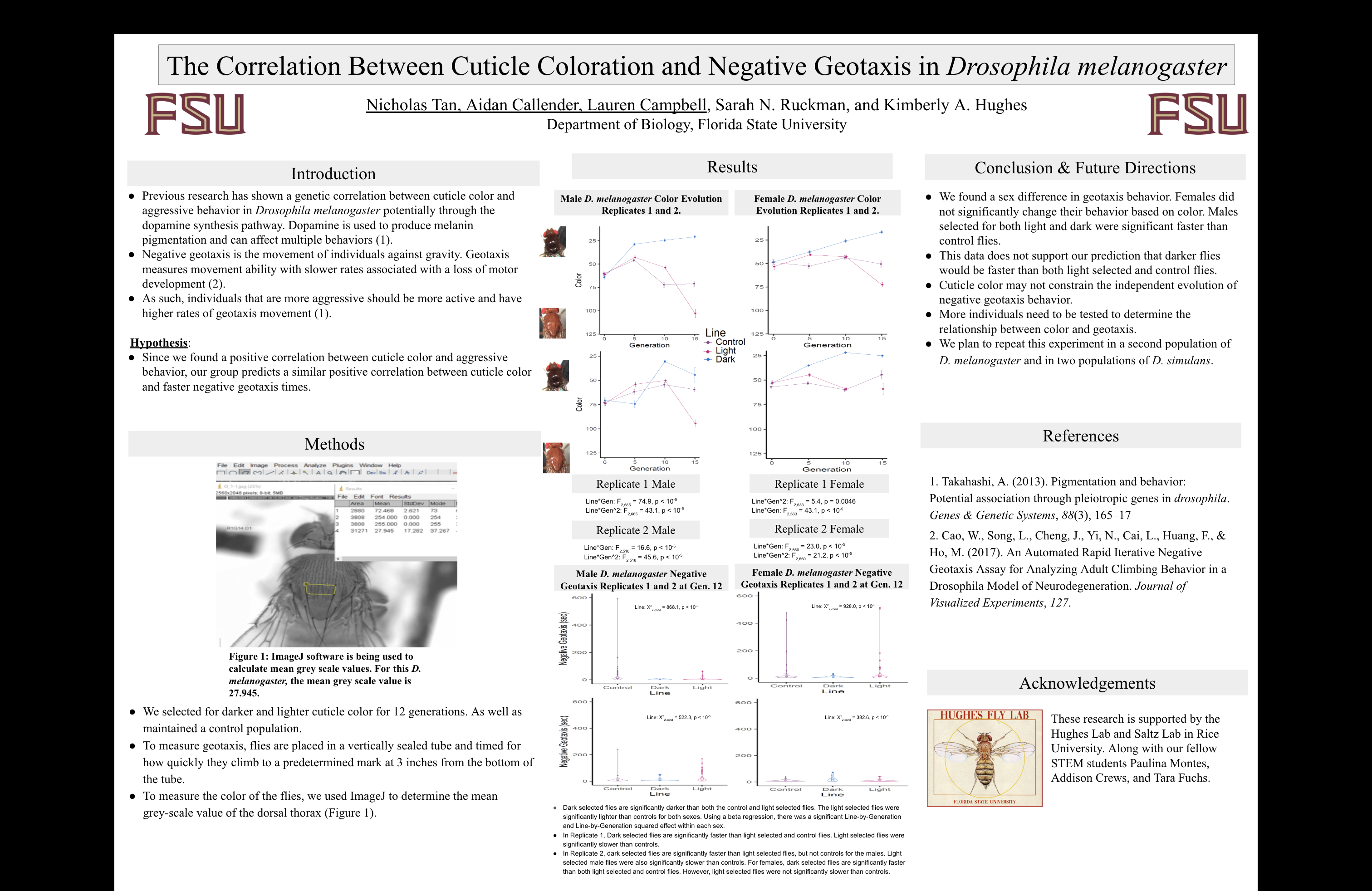Research Symposium
25th annual Undergraduate Research Symposium, April 1, 2025
Nicholas Tan Poster Session 2: 10:45 am - 11:45 am/ Poster #225

BIO
I am a senior at Florida State University with a strong passion for pursuing a career in optometry. Currently, I work under Dr. Kimberly A. Hughes in the Department of Biological Sciences, contributing to research focused on mapping the dopamine pathway in Drosophila melanogaster. In addition to my research experience, I gain hands-on clinical exposure each summer as an Ophthalmic Technician and Medical Scribe at Eye Health America, where I refine my technical skills and deepen my understanding of ocular health. I have developed proficiency in manual and automatic refractions, utilizing NextGen EHR software, performing applanation tonometry, and operating optical coherence tomography (OCT) machines. These experiences have equipped me with both the technical expertise and practical insights essential for a successful career in optometry.
The Correlation Between Cuticle Coloration and Negative Geotaxis in Drosophila melanogaster
Authors: Nicholas Tan, Sarah RuckmanStudent Major: IMS- Clinical Professions
Mentor: Sarah Ruckman
Mentor's Department: Department of Biological Science Mentor's College: Florida State University Co-Presenters: Aidan Callender
Abstract
One long-standing question in evolutionary biology is whether single genes that control multiple traits (pleiotropy) result in limitations on adaptive evolution. If it does, then our ability to predict adaptation (e.g., in the face of changing environments) is compromised. We are using a much-discussed correlation between body coloration and aggressive behavior as a system to address this question. Having found the predicted genetic correlation between cuticle color and aggressive behavior in Drosophila melanogaster using artificial selection (unpublished data), we then asked if any other behaviors co-evolved under selection on cuticle color. For example, the dopamine synthesis pathway is plausibly related to color, aggression, and other behaviors, such as geotaxis. Negative geotaxis is the movement of individuals against gravity. This is a measure of general activity and motor development. The efficiency of geotaxis measures movement ability, with a slower rate of geotaxis associated with a loss of motor development and neurodegeneration. We therefore measured the geotaxis ability of flies (D. melanogaster) selected for darker and lighter cuticle color. To measure geotaxis, flies are placed in a vertically sealed tube and timed for how quickly they climb to a predetermined mark at 3 inches from the bottom of the tube. Results suggest that the time to climb to the top of the tube is faster in the dark-selected lines, suggesting that genetic correlations do constrain the independent evolution of cuticle color and behavior.
Keywords: Drosophila melanogaster, pleiotropy, geotaxis


